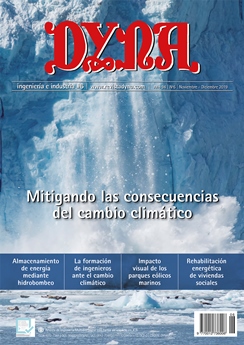OPTIMISATION OF A CORROSION-PROTECTIVE COATING FOR A NEW BOAT LANDING SYSTEM USED IN OFFSHORE WIND TURBINES
Keywords:
corrosión, boat landing system, capa de protección, impacto, abrasión, corrosion, protective coating, impact, abrasionAbstract
Most of the maintenance operations in offshore platforms are performed by using service vessels approaching to boat landing systems, which are secondary structures attached to the main structure of the wind turbine. These systems guarantee certain structural integrity conditions thay may be jeopardised by the aggressive marine environment, which may cause corrosion processes if the structural material is not conveniently protected. The main strategy to avoid corrosion in this type of structures is to provide protective coatings, which in this particular case must have an adequate behaviour not only against the proper marine environment, but also against the abrasion and the impact loads generated by the violent contacts between the service vessel and the boat landing system. This work develops a comprehensive analysis to define a protective coating that provides simultaneously an adequate corrosion protection and a sufficient resistance against abrasion and impact loads. Based on industrial practice and a literature review, a number of tentative proposals were established, combining different metallization strategies, epoxy intermediate layers and external paints. The proposals were successively subjected to corrosion, abrasion and impact tests, discarding, after each set of tests, those providing unsatisfactory results. The final solution consists of 3 consecutive layers: thermal sprayed aluminium, a two-component polyamine cured pure epoxy, and a two-component chemically curing aliphatic acrylic polyurethane topcoat.Downloads
Published
2019-11-01
Issue
Section
ARTICULOS

